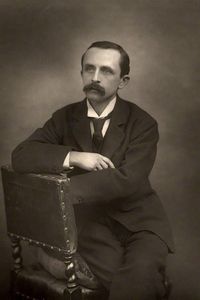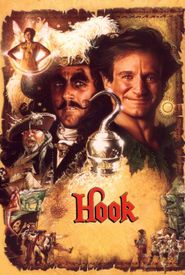James Matthew "J. M." Barrie was a renowned Scottish novelist and playwright. He is primarily remembered for creating the iconic character of Peter Pan and his supporting characters. Barrie's career spanned over five decades, during which he wrote numerous plays, novels, and short stories.
Born in 1860 in the burgh of Kirriemuir, in the county of Forfarshire (now Angus),Barrie was the ninth child of David Barrie, a moderately prosperous weaver, and Margaret Ogilvy. His mother introduced him to English-language literature at an early age, and Barrie developed a passion for reading and writing.
Tragedy struck when Barrie's older brother, David, was killed in an ice-skating accident in 1866. Barrie's mother was devastated by the loss, and the young boy began to imitate his dead brother, seeking to fill the void left by his absence. This experience would later influence Barrie's writing, particularly in his creation of Peter Pan.
Barrie attended the Glasgow Academy, the Forfar Academy, and the Dumfries Academy, where he developed a love for literature and drama. As a teenager, he was part of a group that re-enacted pirate adventures and was involved in a drama club. He wrote and produced his first play, "Bandelero the Bandit," which was denounced by a local clergyman for its supposed immorality.
After completing his education, Barrie worked as a staff journalist for the Edinburgh Evening Courant and later for the Nottingham Journal. He began writing short stories based on his grandfather's life, which eventually evolved into a trilogy of novels: "Auld Licht Idylls," "A Window in Thrums," and "The Little Minister."
In the 1890s, Barrie turned his attention to theatrical works, with early successes including "Ibsen's Ghost, or Toole Up-to-Date" and "Quality Street." The latter, a comedy about a respectable school mistress who pretends to be a younger woman to reclaim the heart of her former suitor, ran for 459 performances in London.
Barrie's most famous creation, Peter Pan, was introduced in 1902. The character became a huge success, and Barrie continued to write stories and plays featuring the boy who refused to grow up. Peter Pan's popularity extended beyond children, attracting adults who appreciated the character's ambivalent morality and the social commentary that underpinned the stories.
Throughout his career, Barrie was known for his wit, his ability to craft engaging stories, and his innovative approach to playwriting. He was praised by fellow writers, including George Bernard Shaw, and was part of a campaign to challenge the United Kingdom's strict censorship laws.
In his later years, Barrie continued to write, producing plays such as "Dear Brutus" and "Mary Rose." He gave the copyright to Peter Pan to Great Ormond Street Hospital in 1929, a decision that has financially supported the hospital ever since.
Barrie died in 1937, at the age of 77, and was buried in his native Kirriemuir. His legacy has endured, with Peter Pan remaining a beloved character around the world. Tourists continue to visit locations in Kirriemuir associated with Barrie, and his works continue to be performed and adapted into various media.







































